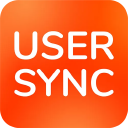Microsoft Entra ID (formerly Azure AD) configuration
Azure Active Directory is now Microsoft Entra ID (https://learn.microsoft.com/en-gb/entra/fundamentals/new-name).
This page contains information about how to set up Microsoft Entra ID and User & Group Sync for Atlassian Server or Data Center applications.
When you encounter different wording, please contact us and we will update the documentation.
Video Guide
Quickstart guide
Go to portal.azure.com, click "Microsoft Entra ID" in the left panel and then choose "App registrations".
Click on "New registration"
Enter a "Name" for the app.
Click on "Register".
On this page you can see the "Application ID" and the "Directory (tenant) ID". You will need both to setup the Azure AD connector in User Sync.
Click on "API permissions" in the left panel.
Delete the default created permission since it's not needed.
Click on "Add a permission" and choose "Microsoft Graph".
Click on "Application Permissions".
Search for the "Directory" entry, expand it and tick "Directory.Read.All".
Click on "Add permissions" to add the permissions.
Click on "Grant admin consent for ...".
Next, click on "Certificate & secrets".
Add a new Client secret by click on "New client secret".
Enter a description for the secret and also set an expiry date. Click on Add to confirm.
Copy the secret now ("VALUE"). You are not able to see it again after leaving that page. Please paste it to a text editor for the tutorial.
Now it is time to configure User & Group Sync in your Atlassian Server or Data Center product. Please keep the Azure website open, because we will need it later on.
Now, go back to your Atlassian Server or Data Center product, and go to the User & Group Sync Configuration.
Click Create Connector and choose Azure.
First, paste the client secret (which you copied before) into the Application Secret.
Next, go back to the Azure website and click Properties in the app you have created for User & Group Sync. Copy the Application ID and Directory (Tenant) ID and paste them into the User & Group Sync configuration in your Atlassian product.
In the User & Group Sync configuration under the Sync Settings tab, activate Scheduled Synchronization. You can edit the Cron expression to set a synchronisation interval.
User guide
Go to http://portal.azure.com and click the Microsoft Entra ID.
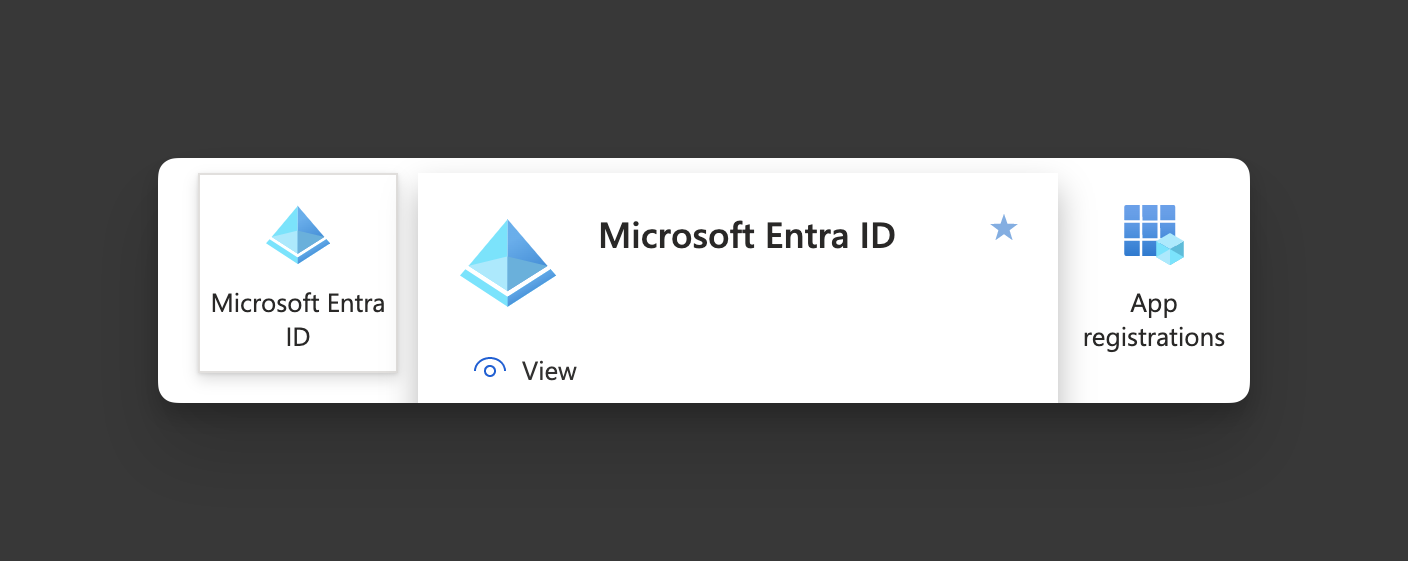
In the Microsoft Entra ID click App registrations.

Click New registration to create a new app.
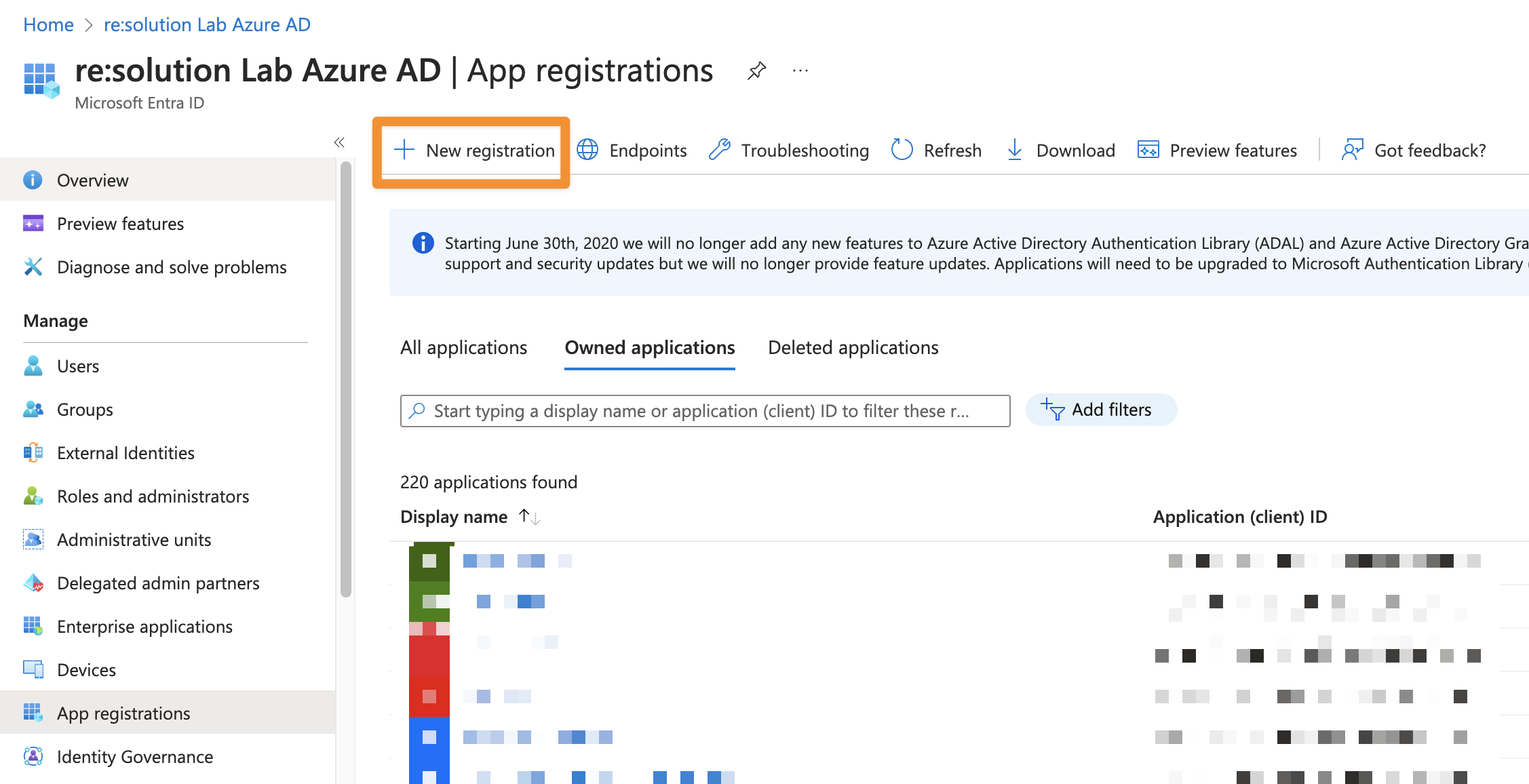
Enter a name for your application and click on Register to proceed.
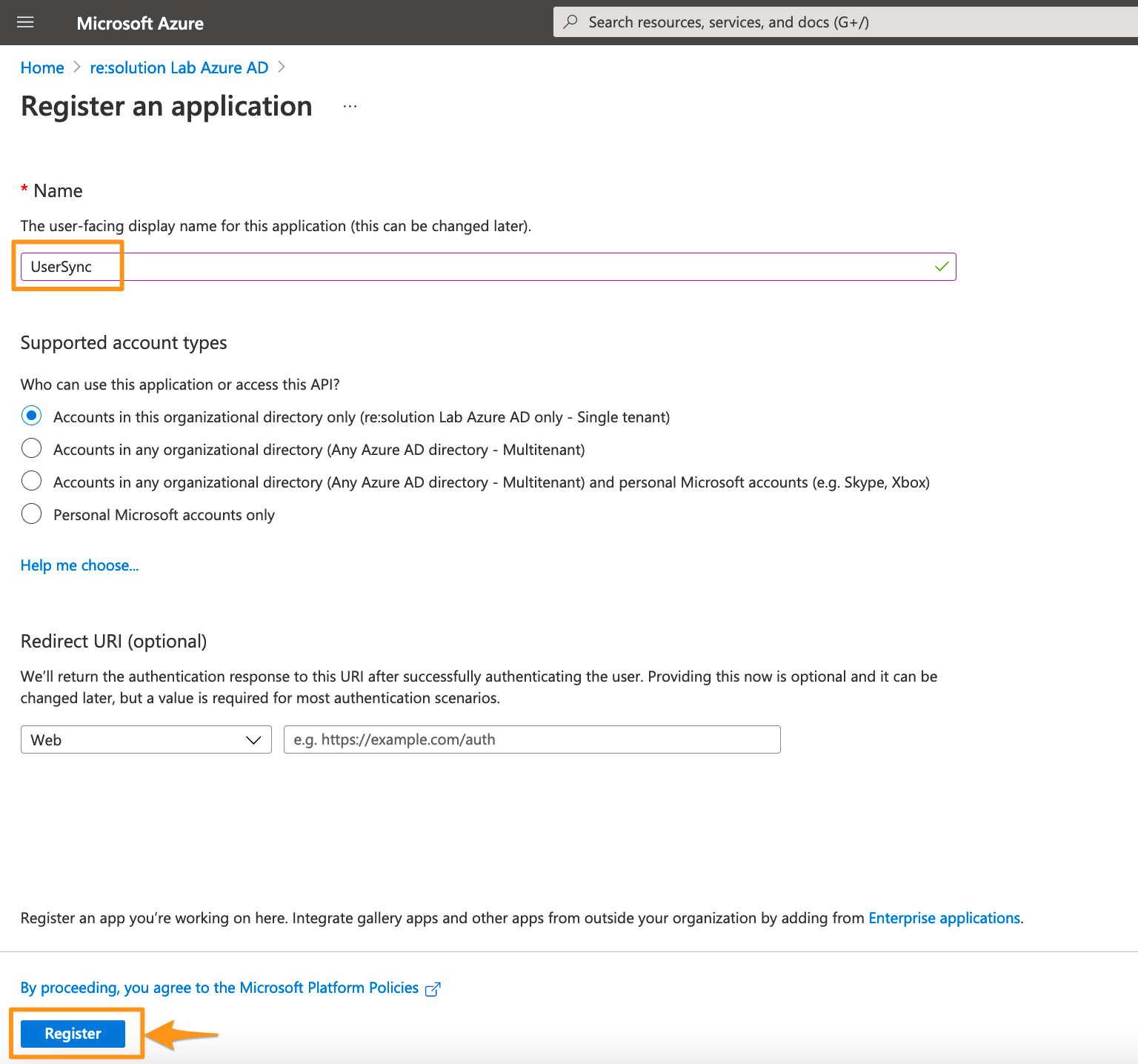
Click API permissions in the left panel.
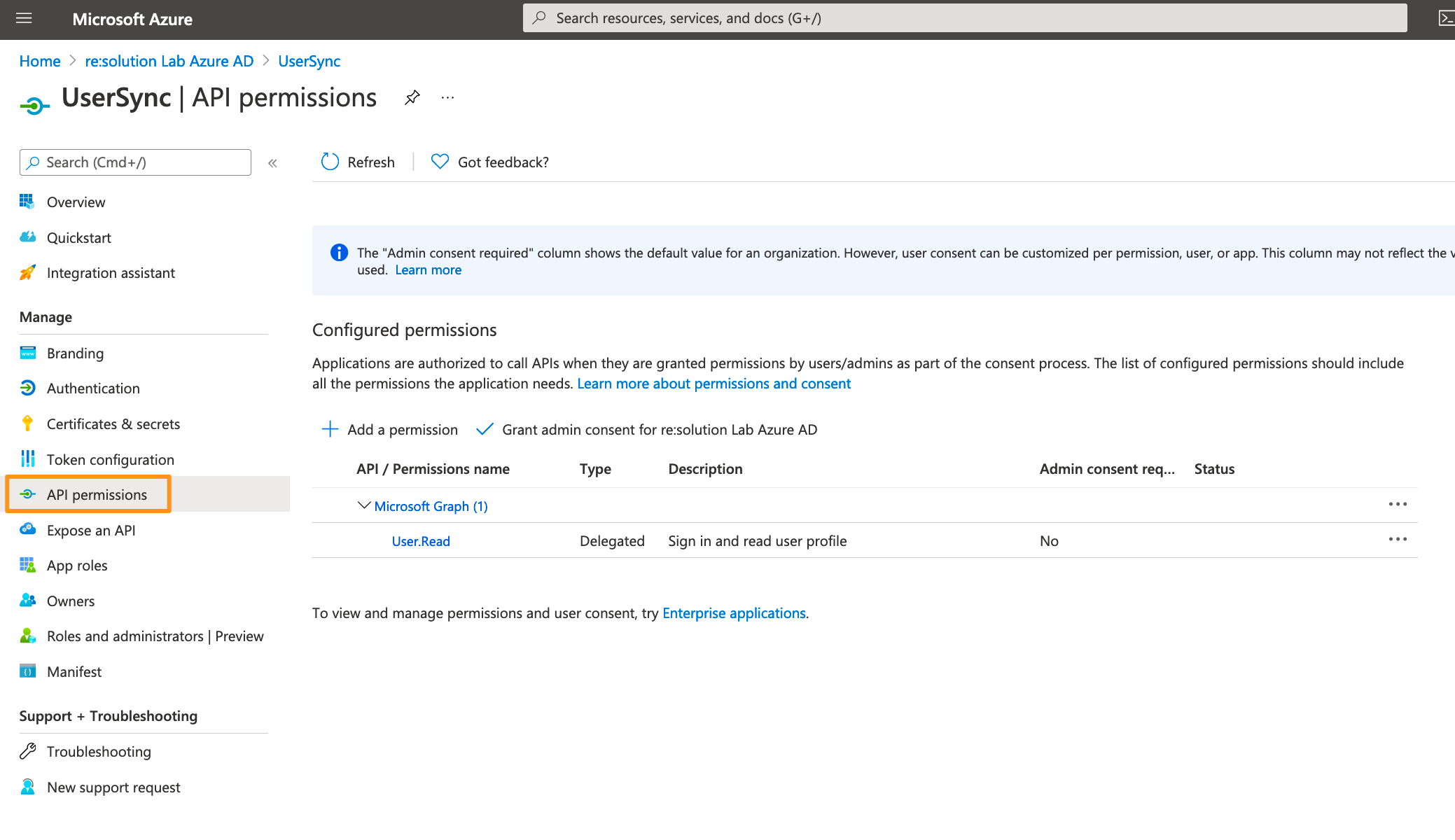
Delete the default created permission since it's not needed.
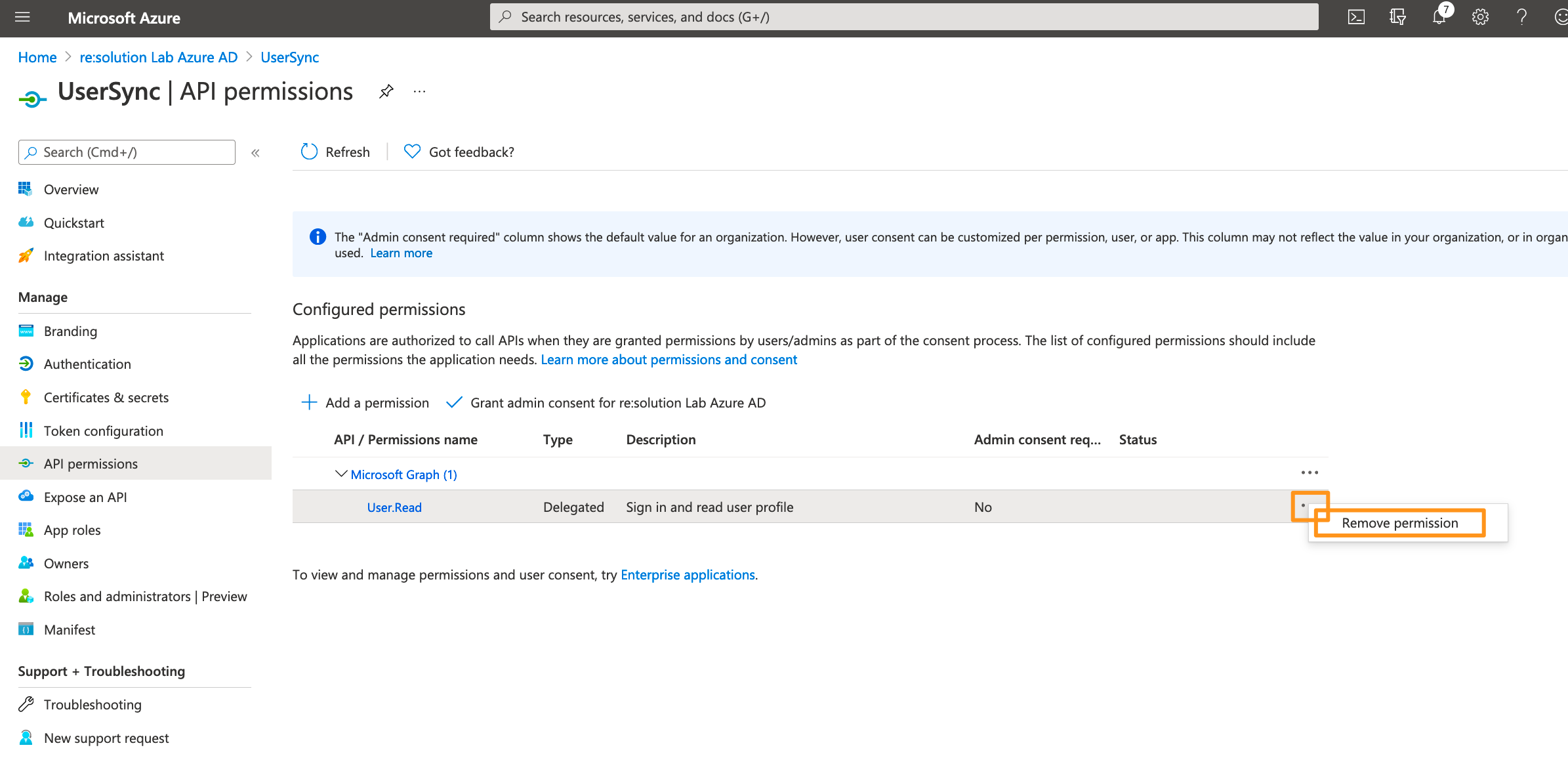
Click on Add a permission.
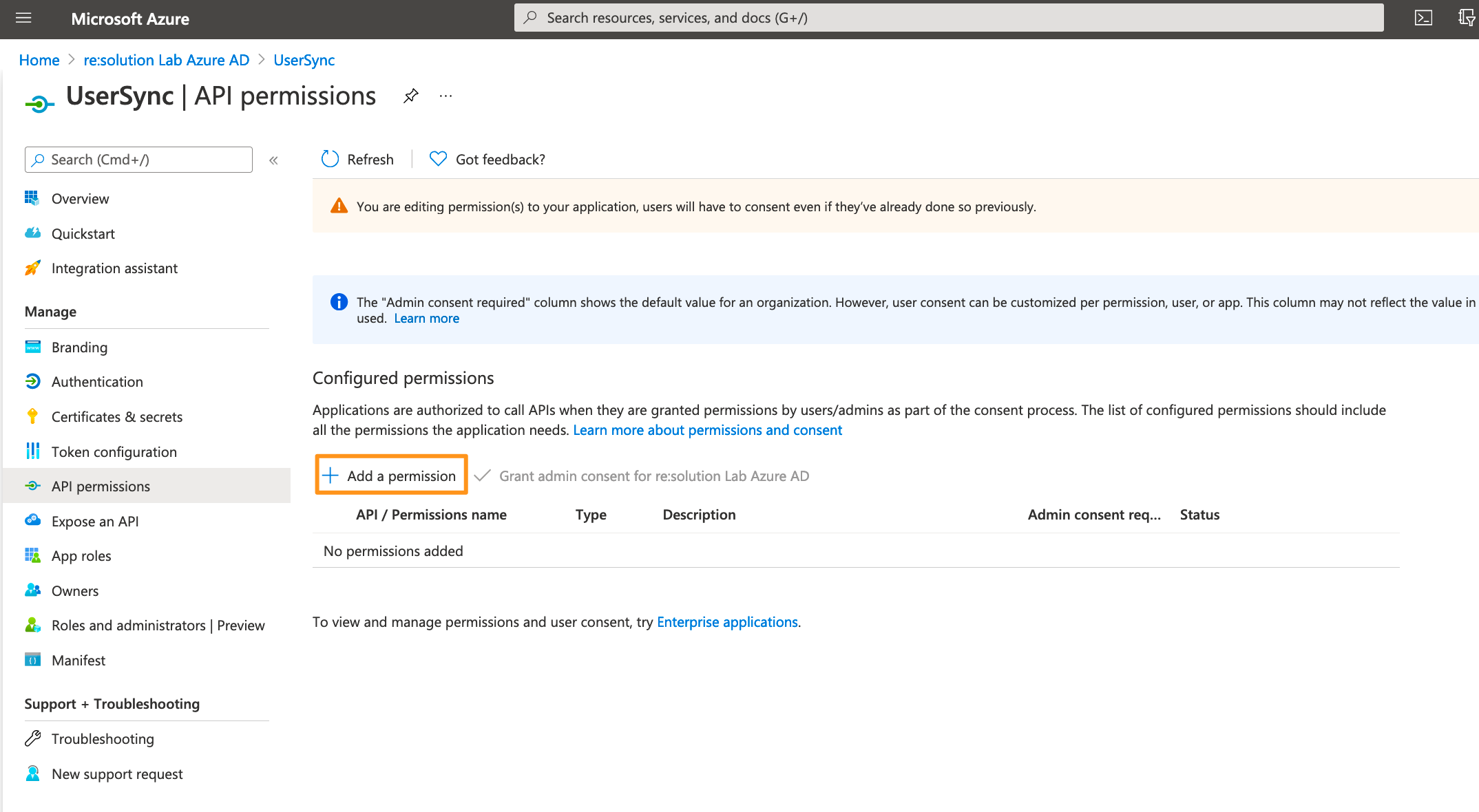
Select Microsoft Graph.

Choose Application permissions.
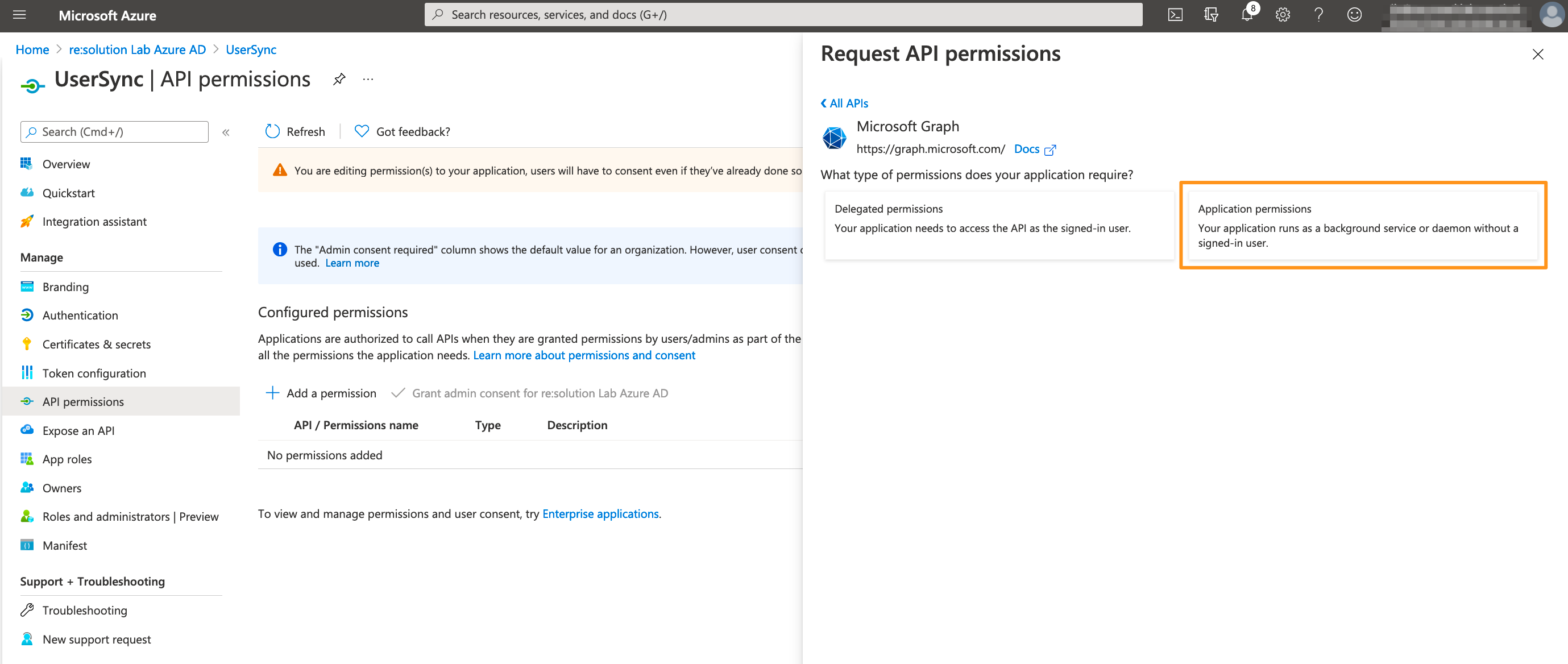
Expand Directory and tick Directory.Read.All
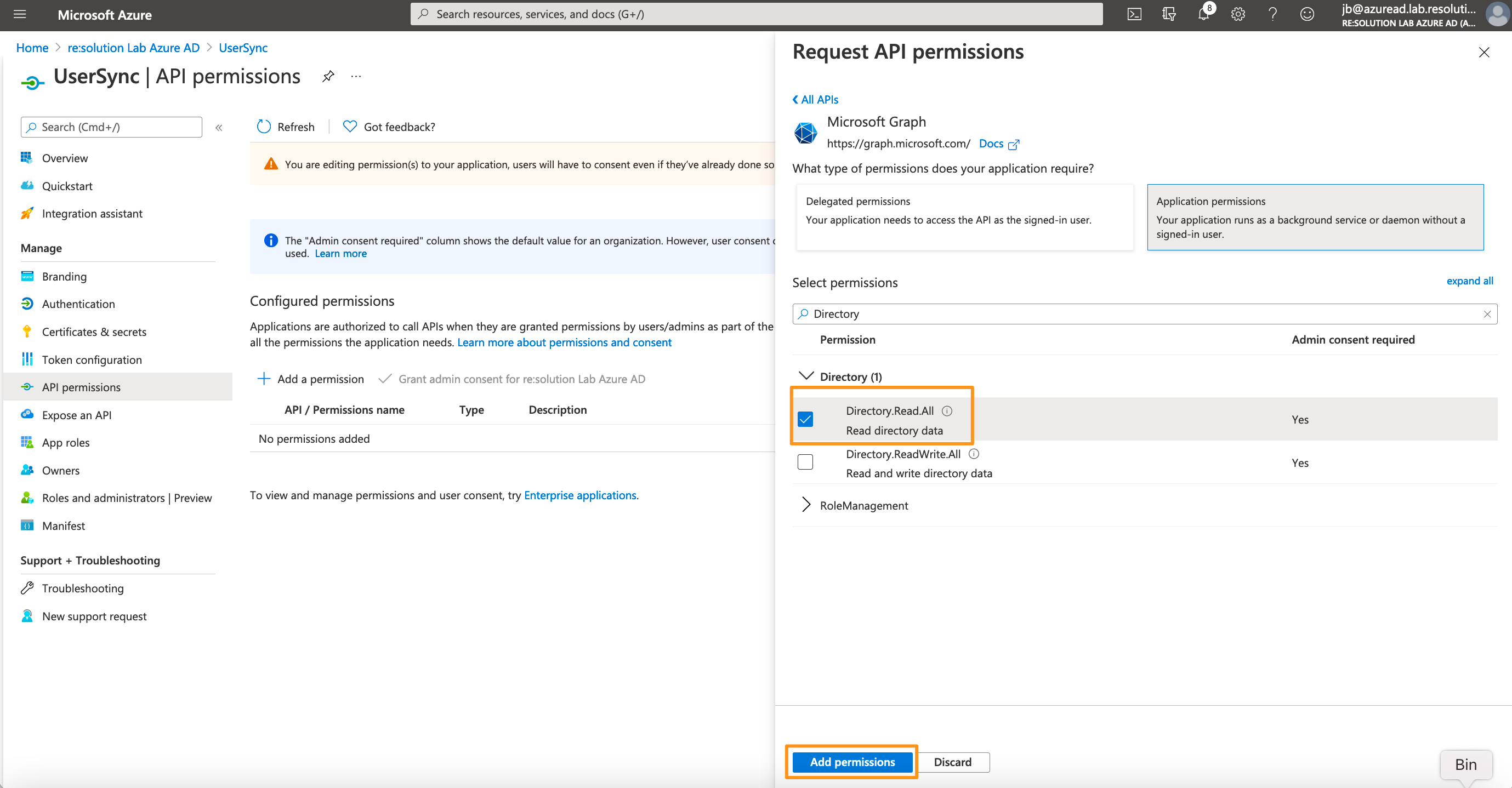
From SAML version 6.3.0 or User Sync 2.7.0 User Sync also supports syncing the profile pictures of users in Azure AD. To be able to use this feature, you additionally need to add User.Read.All as permission.
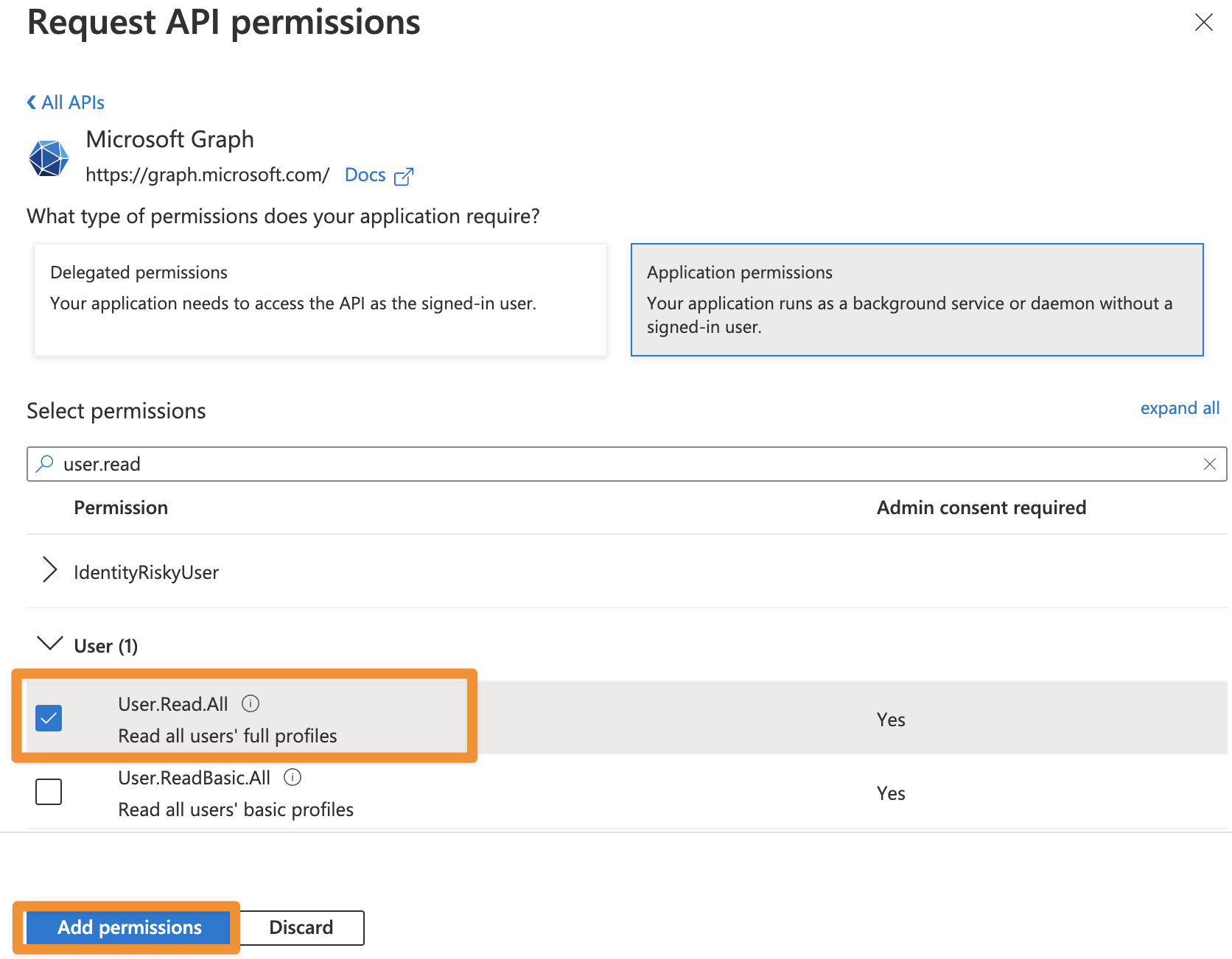
Click on "Grant admin consent for ...".

It should look like this after granting admin consent:

For the next step, click on Certificates & secrets in the left panel, and then click on New client secret.
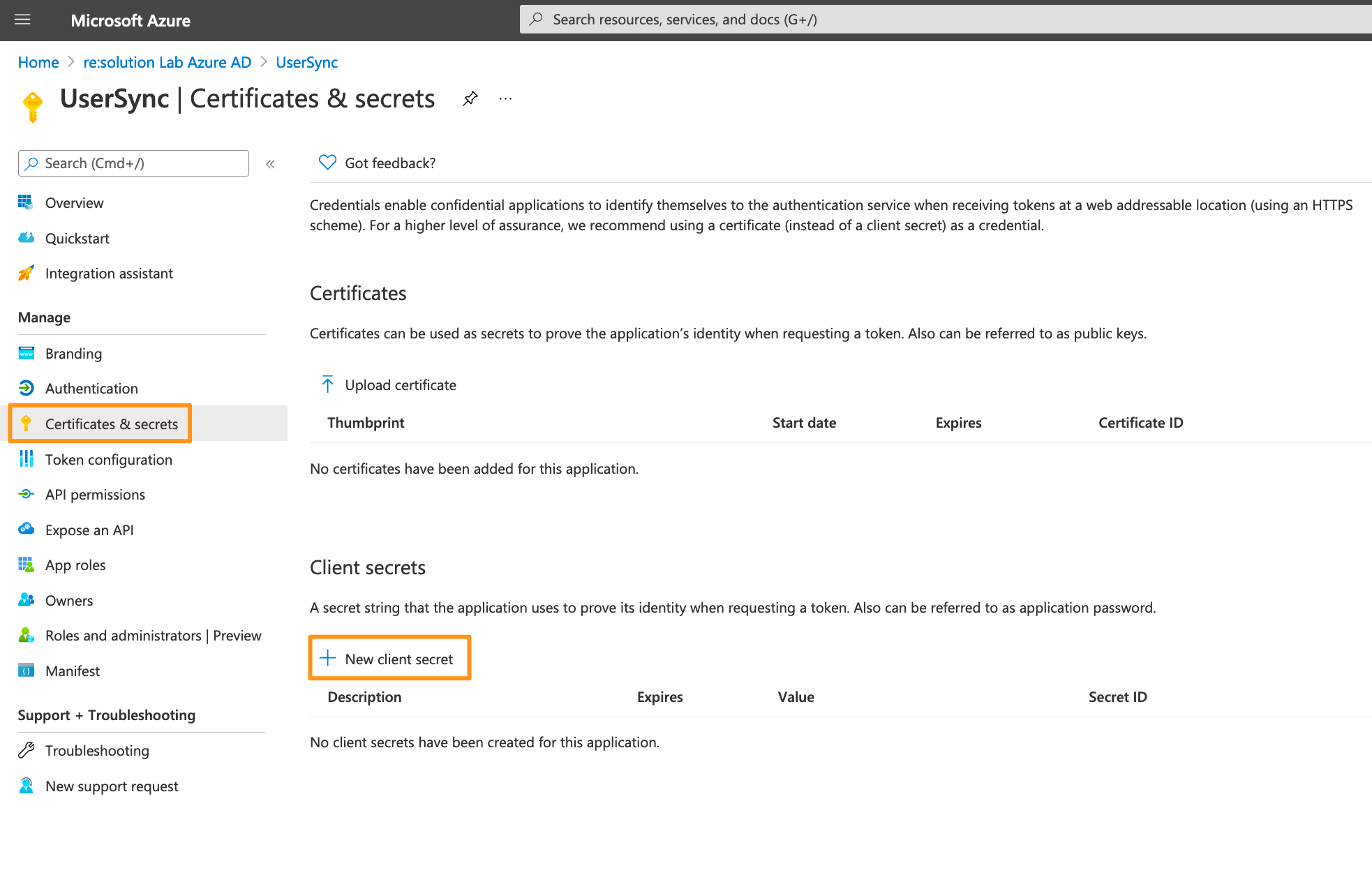
Enter a description for the secret and also set an expiry date. Click on Add to confirm.
Please note that your secret will expire after 24 months. If syncs start failing in 24 months, you must create a new secret and update the secret in the connector.
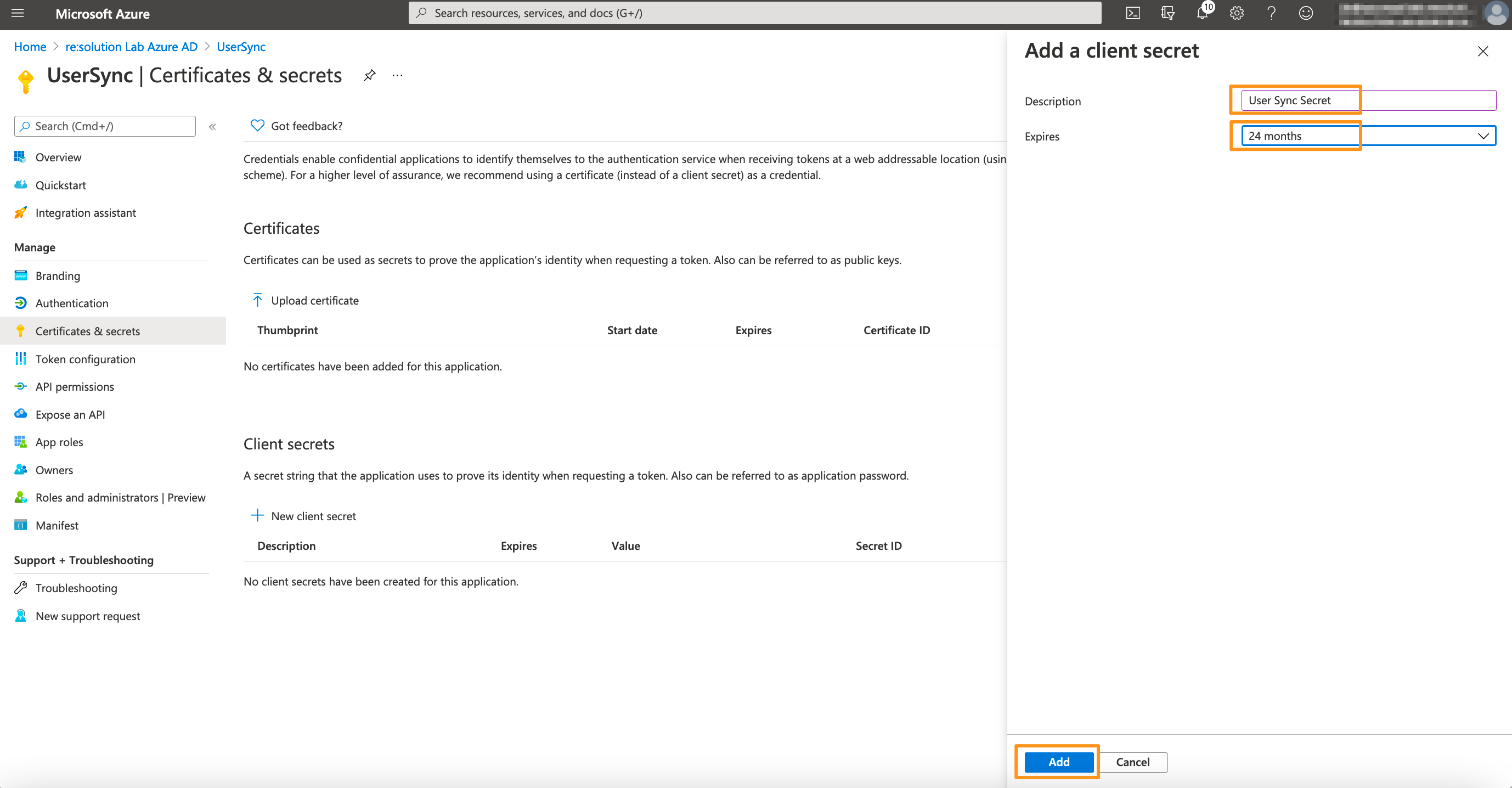
Your Client secret will display only once, thus copy the secret. Of course, it is possible to create a new secret, if you lost your secret.
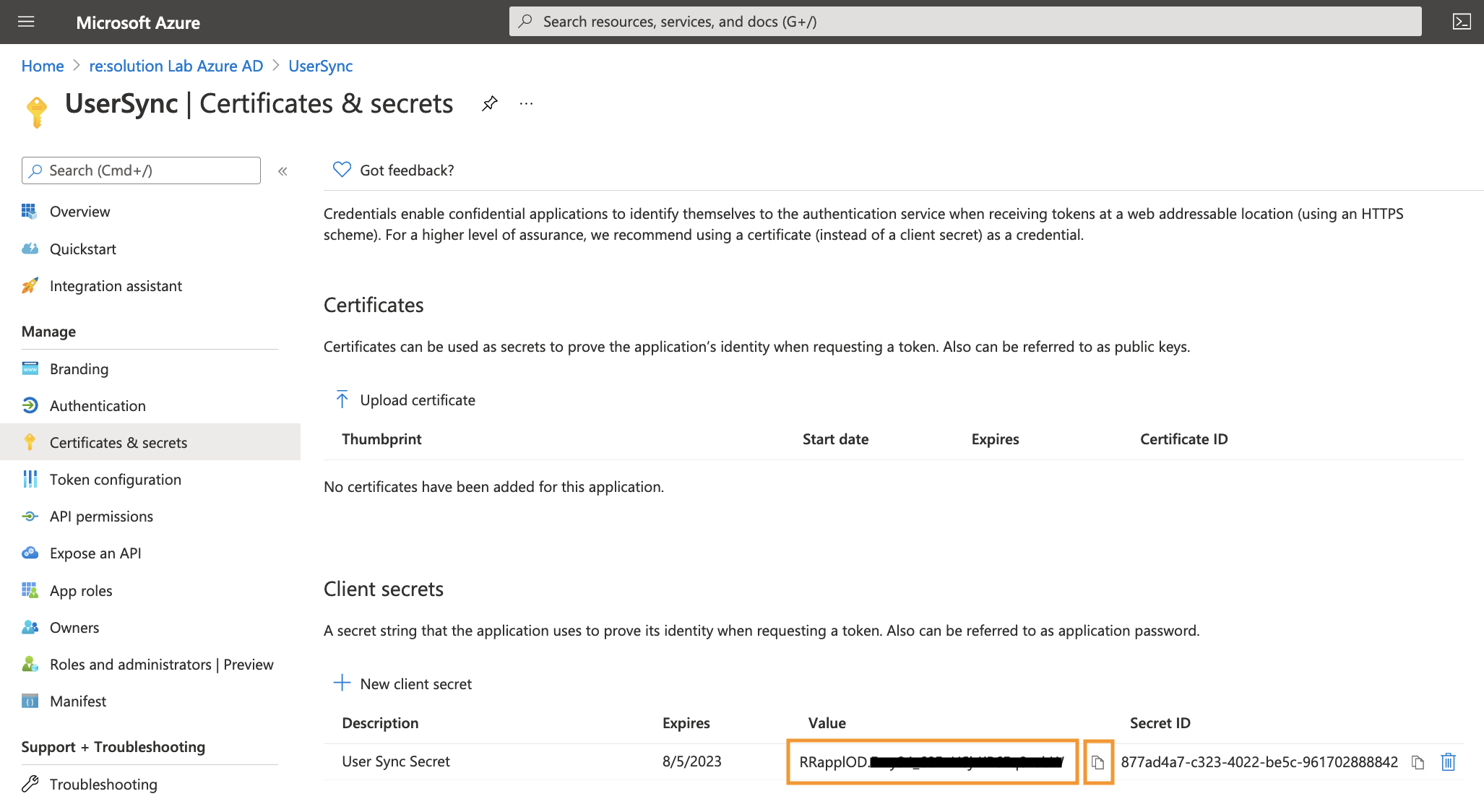
Go to the overview page of the Microsoft Entra ID app. Copy the Application ID and the Directory (tenant ID). Now, it is time to head over to your Atlassian application.
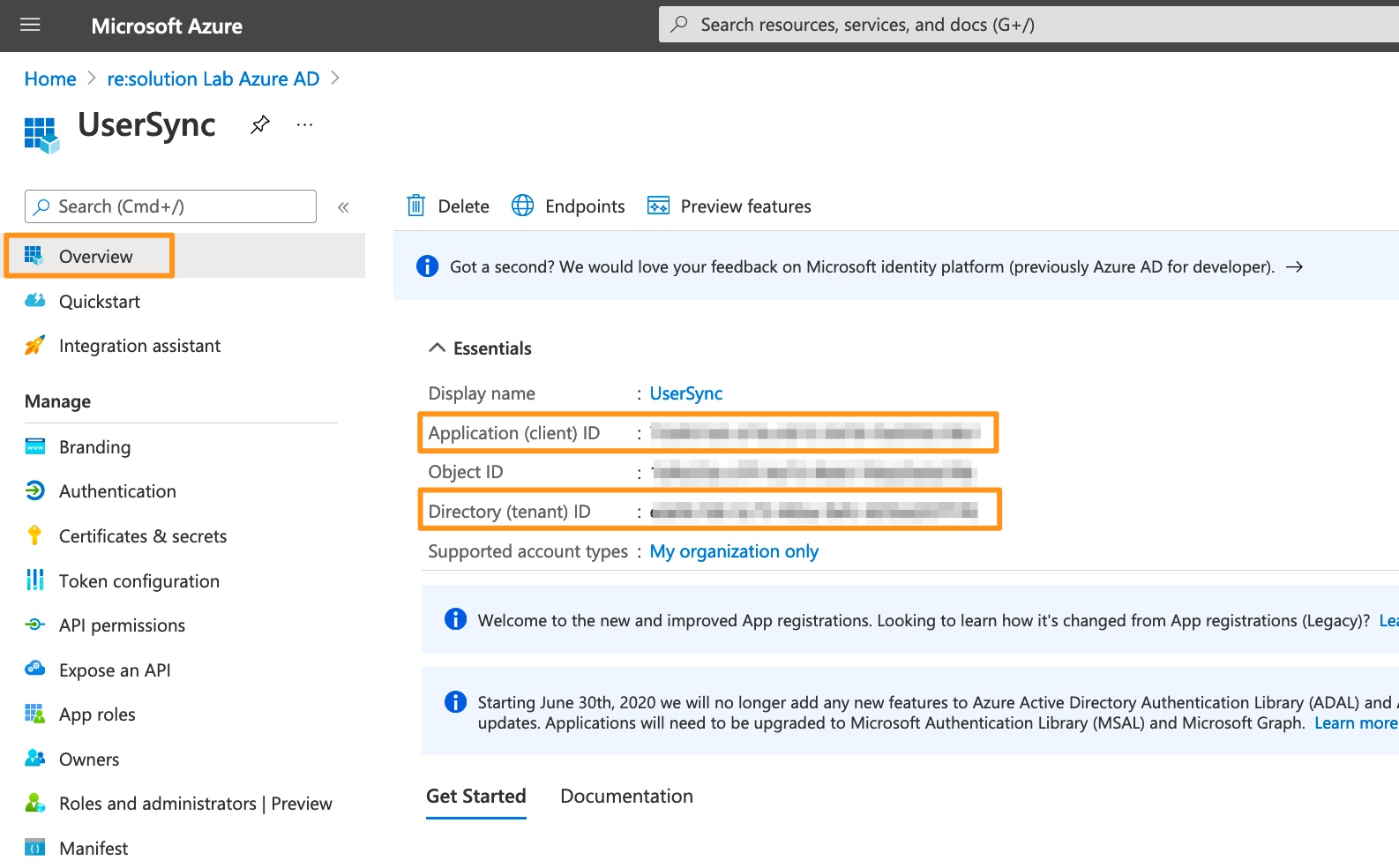
In your Atlassian application, go to User Sync, click Create Connector, and choose Entra ID.
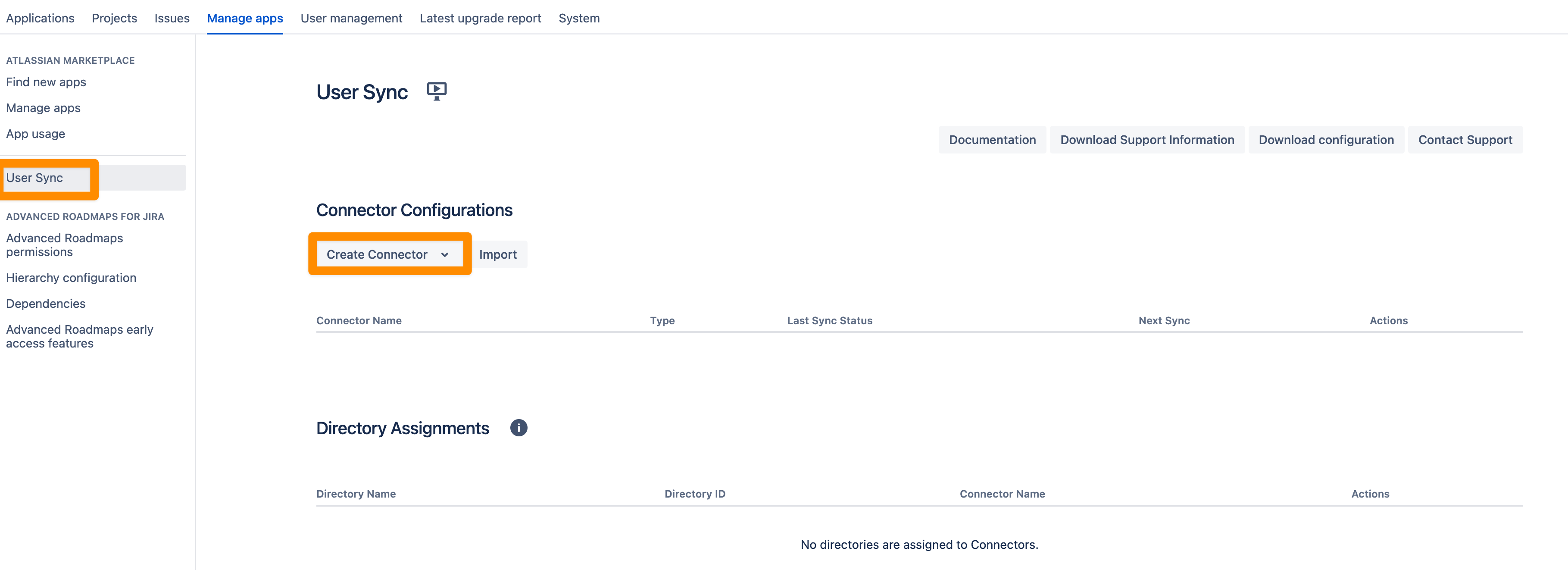
Add the Application ID, Directory ID, and the Application secret. Use the Save and Test Connection button to check whether Azure's API endpoints are reachable and API permissions are set correctly.
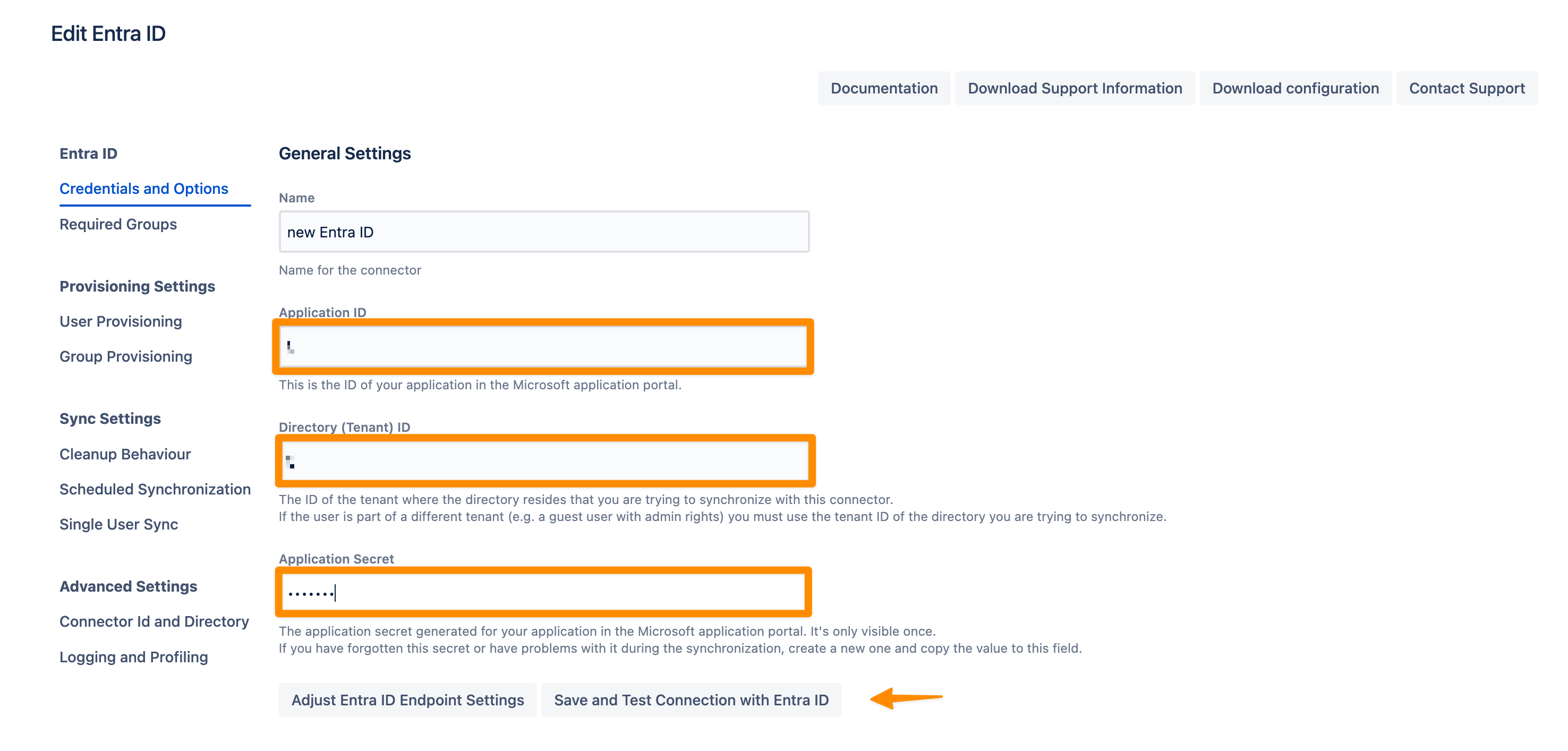
If you want to limit the number of users you sync from Entra ID you can set this up in the Required Groups tab. If you want to sync all users from your tenant you can skip this configuration step.
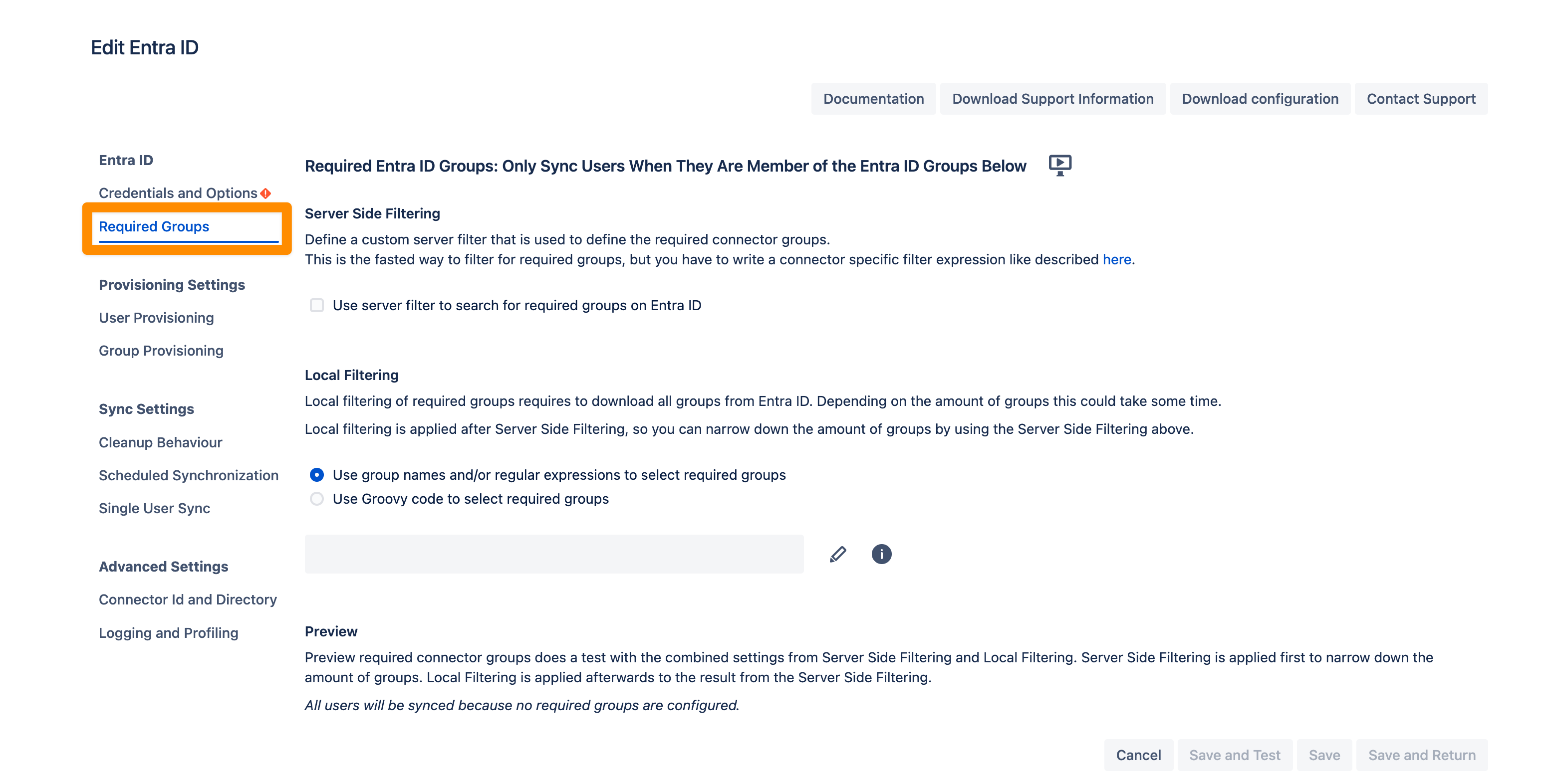
In the User Provisioning and Group Provisioning tab, you can change the attribute mapping for the user and define what groups should be assigned to users in case you don't need all groups from Entra ID. If you leave the settings unchanged the standard user attributes are synced together with all the groups that have been assigned to the user.
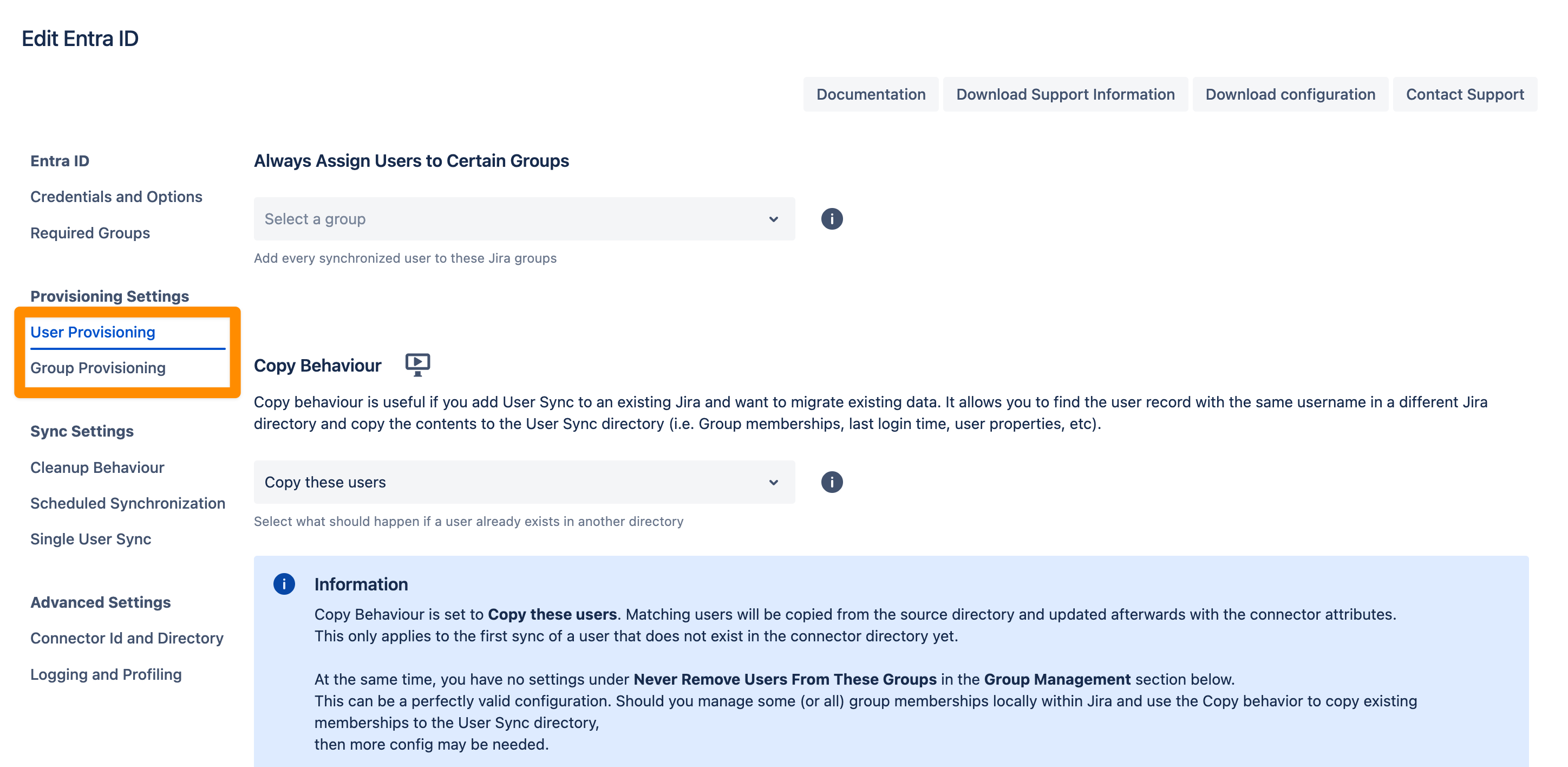
In the Sync Settings section, you can configure the Cleanup Behavior and the Scheduled Synchronization. The cleanup defines what should happen to the user when it is not returned by Entra-ID anymore. The default is deactivating the user. By configuring the Scheduled Synchronization you can have the sync run periodically without manual interaction. When enabled the sync runs daily at 2 am but you can change this if you want.

Please ensure that you Save your configuration.
You are now ready to commence either a simulated or a full sync. By simulating the sync first you will be able to verify your configuration and see what changes User Sync would apply like what users will be added, modified, or not modified. With the full sync, User Sync will apply those changes. Both sync actions will run a full sync and will have the same sync duration. For more information on the sync simulation, please refer to Using the Simulated Sync Feature.

